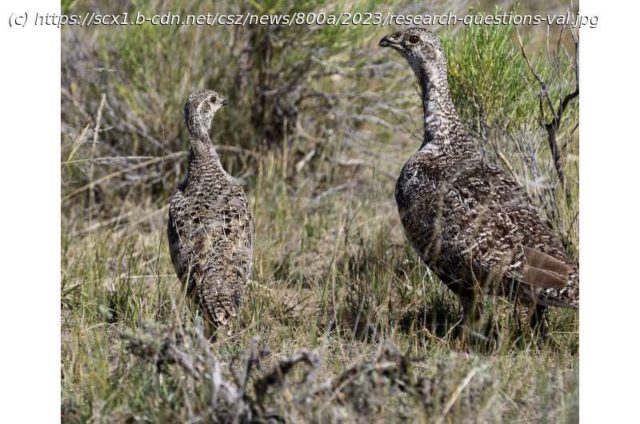Efforts to improve sage grouse habitat through conventional management practices may be ineffective—and even counterproductive—according to research by University of Wyoming and other scientists.
Efforts to improve sage grouse habitat through conventional management practices may be ineffective—and even counterproductive—according to research by University of Wyoming and other scientists.
Sagebrush reduction strategies, including mowing and herbicide application, are often employed to enhance habitat for the greater sage grouse and other sagebrush-dependent species. The theory is that clearing large sagebrush shrubs improves food sources in sage grouse nesting and brood-rearing habitats by allowing other, more nutritious vegetation to grow with less competition. This, in turn, should increase invertebrate populations, another food source for sage grouse.
But a new paper published in the journal Wildlife Monographs suggests these methods may be misguided.
In a nine-year experimental study, researchers examined how sage grouse populations in central Wyoming responded to mowing and applying the herbicide tebuthiuron to Wyoming big sagebrush. According to their data, these treatments did not benefit the birds.
« Some managers think, ‘Treating sagebrush for wildlife is how it’s supposed to work, and we’ll keep doing it,' » says Jeff Beck, a UW professor of ecosystem science and management and principal investigator for the study.






